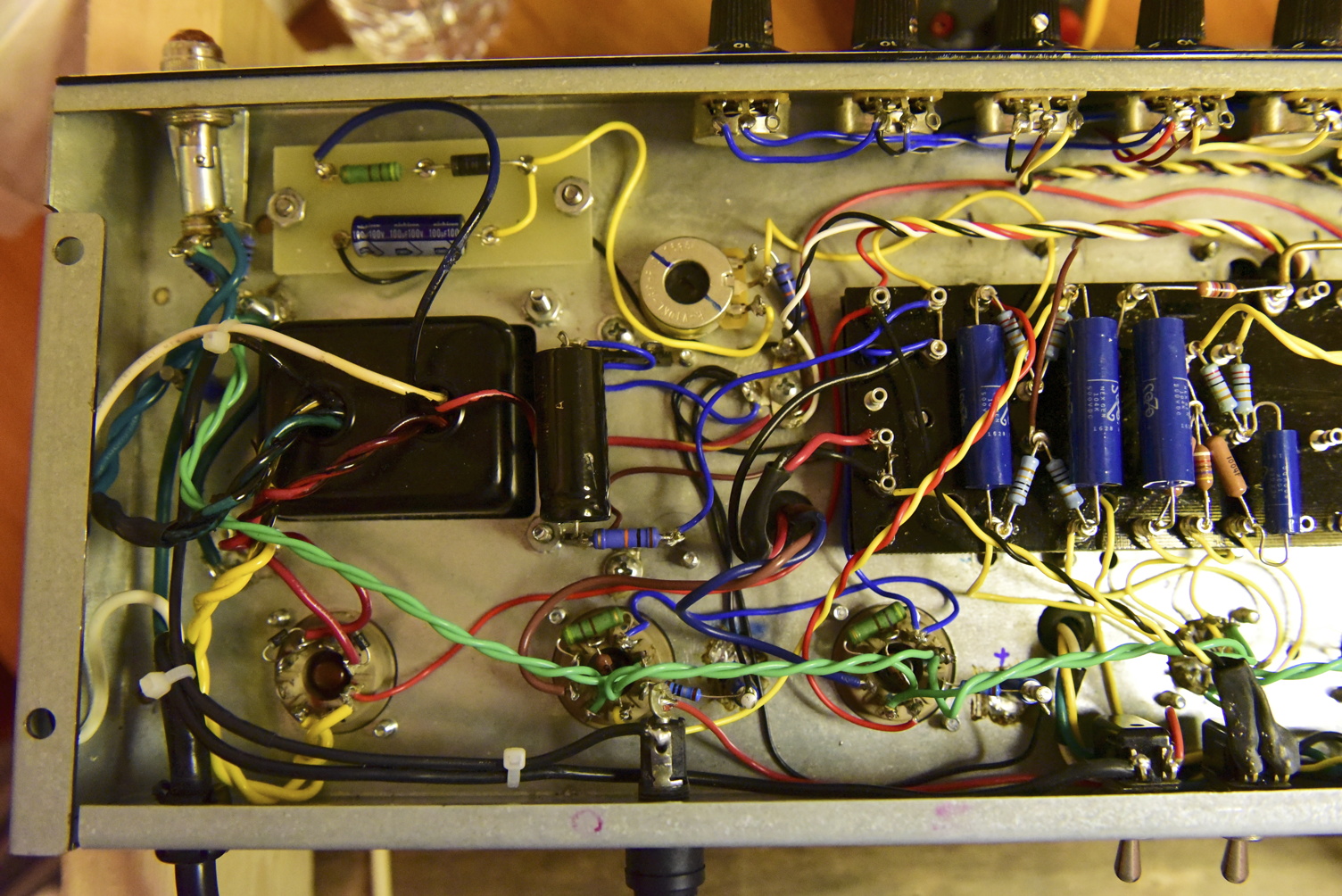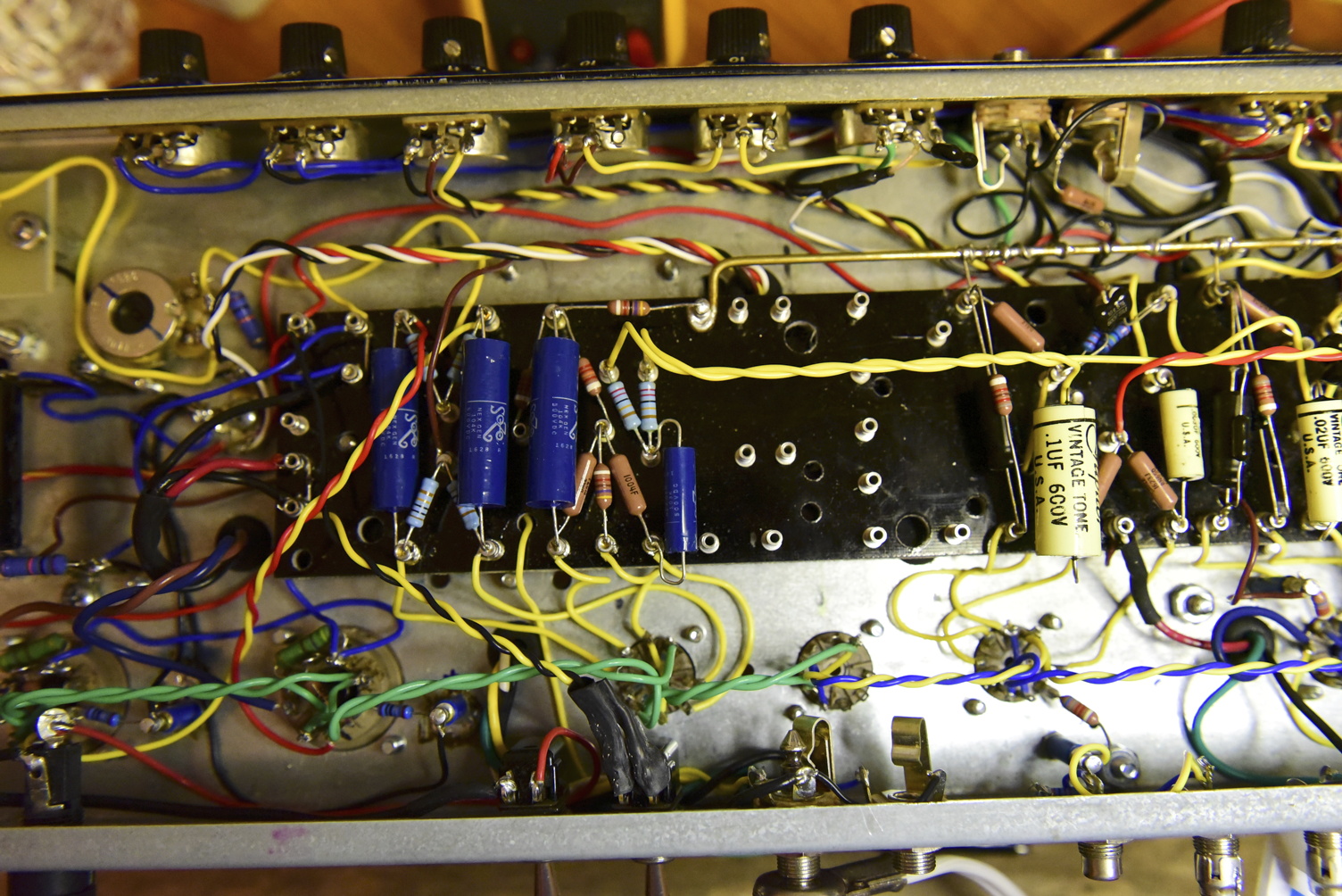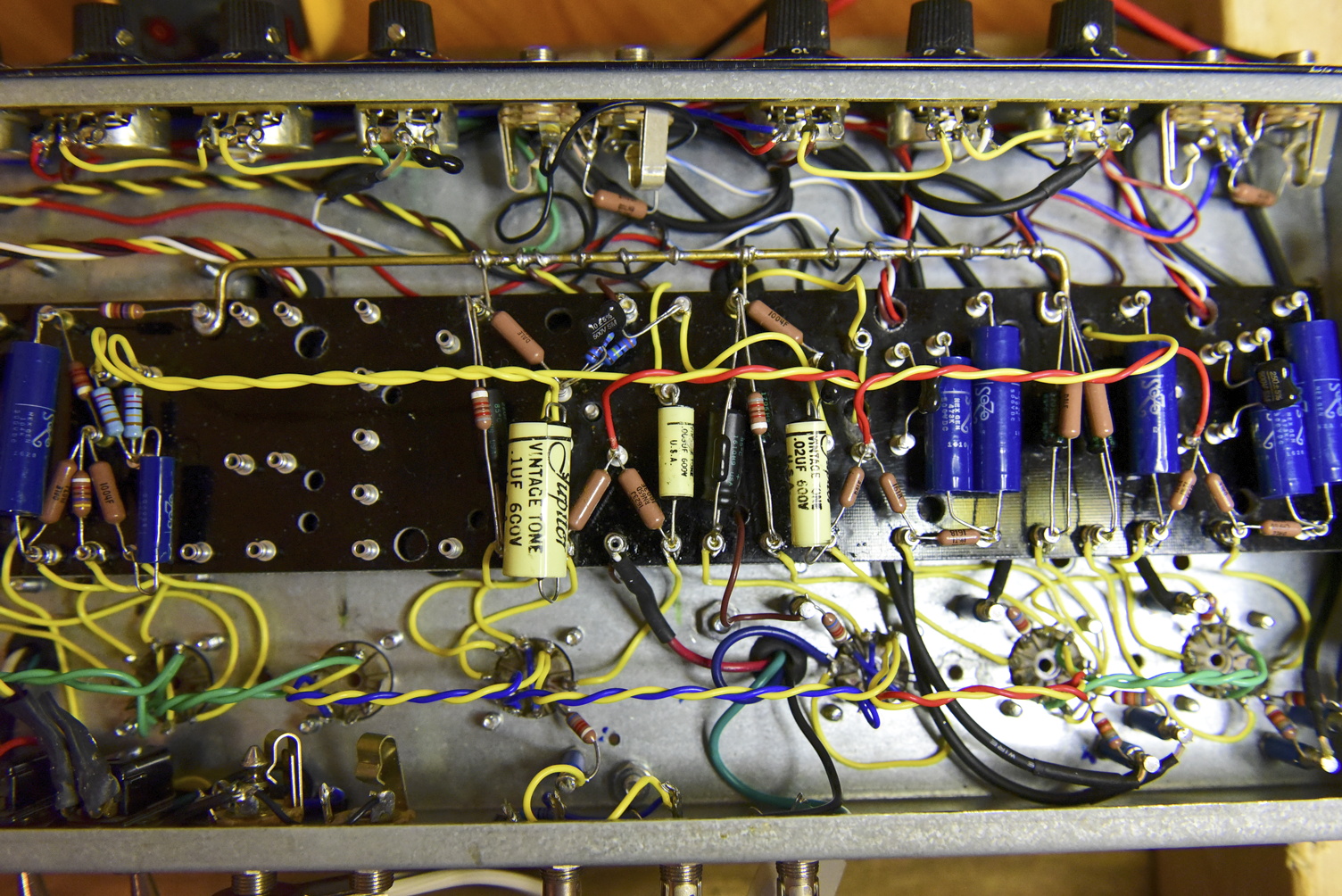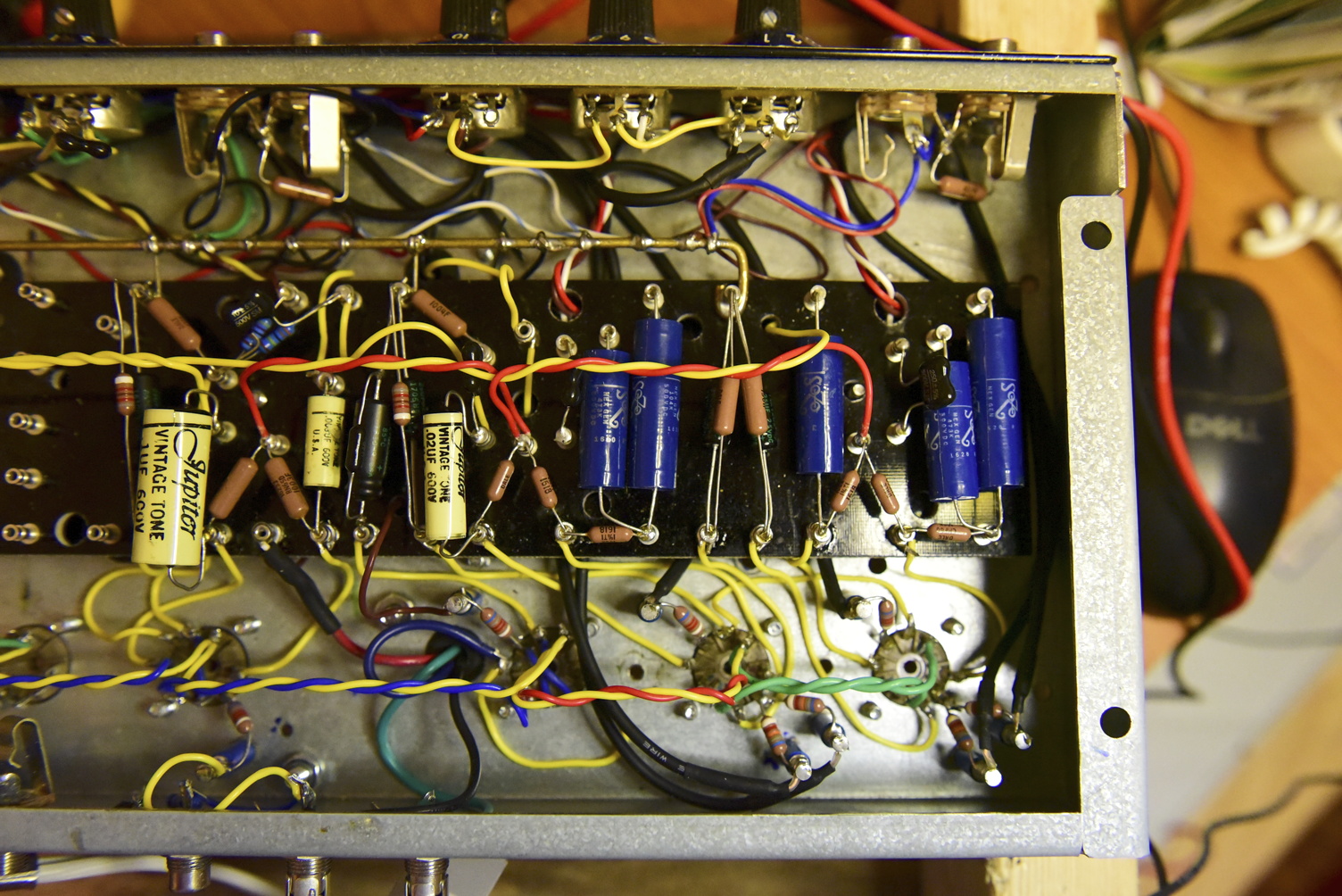Hi All, I put a jumper on the grid of the recovery tube, but it picked up more noise. I think I need to make a really short cable and solder one end. I will do that later. I didn't think it reduced the hum but with the other stuff it was picking up, hard to tell. I chop stick moved what wires I could move, but didn't hear any improvement. Some photos:




Noticed that if I turn the volume on 10, I hear a similar hum, but much lower level than the reverb knob. I never had the volume on that high while practicing, so probably didn't notice. The hum in the reverb is worse. I will hook up the scope again and get a photo of the trace.
Noticed that if I turn the volume on 10, I hear a similar hum, but much lower level than the reverb knob. I never had the volume on that high while practicing, so probably didn't notice. The hum in the reverb is worse. I will hook up the scope again and get a photo of the trace.
 Didn't use the paper/cardboard/resin eyelet board. This version of the amp, Im using a fiberglass double turret board (at least what they say on the site) from Watts:
Didn't use the paper/cardboard/resin eyelet board. This version of the amp, Im using a fiberglass double turret board (at least what they say on the site) from Watts:  Something big wrong.
Something big wrong.
Comment